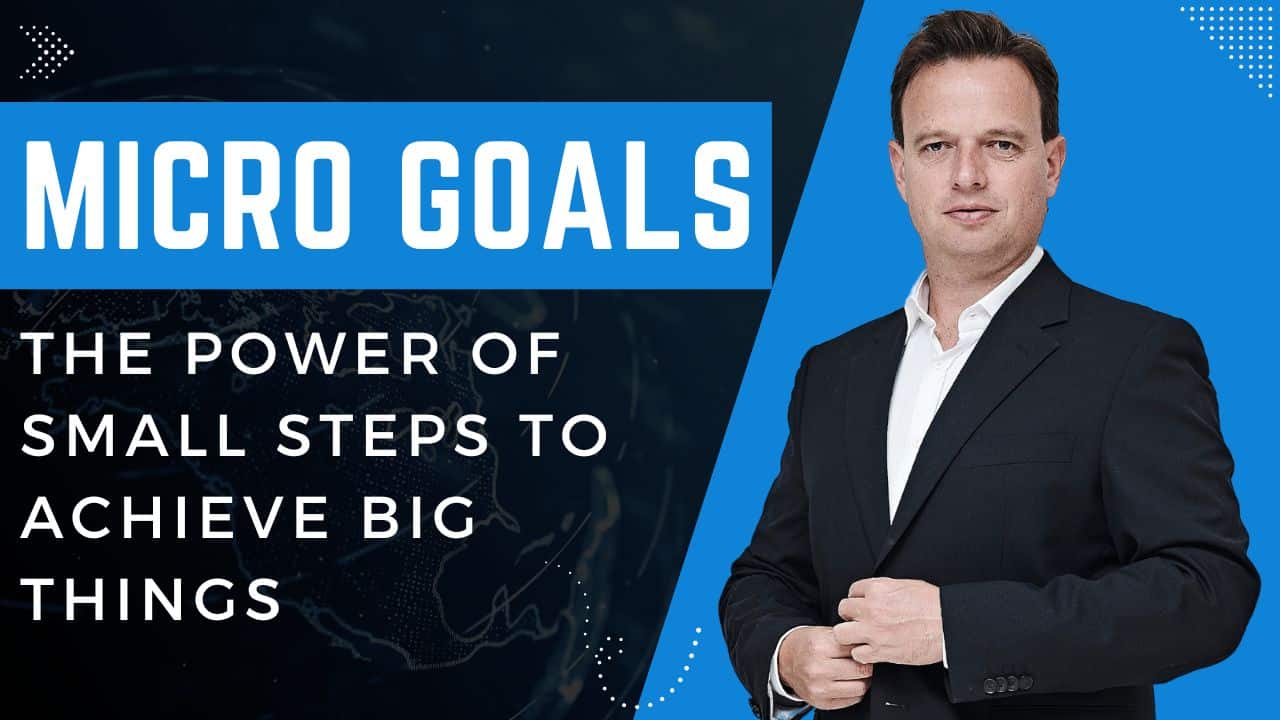This week I have a new approach to goal setting for you called “Micro Goals”.
If your team has struggled to achieve big goals, then micro goals might be perfect for you.
A few weeks ago, I wrote about the concept of “Anti-Goals”.
Anti-Goals is the approach to goal setting where you identify and stop doing things you don’t want to happen. That frees up time for your team to do the things with the most impact.
Micro goals are small action steps that help you reach bigger goals.
They focus on easy tasks that move you closer to your main objective.
They keep you on track and make sure you're taking small, specific actions that contribute to the bigger picture.
Sound good?
Here’s a workshop for a team to set micro goals:
Step 1 - Identify the large goals
These are your BHAGs - Big Hairy Audacious Goals (pronounced bee-hags).
A great BHAG should stimulate forward momentum, get people excited, be adventurous yet achievable, and encourage your team to throw their talent and energy into it.
Step 2 - Break down the large goals into small tasks
Define clear tasks that are easy to understand and within reach.
Set tasks that can be accomplished quickly and break them down into manageable tasks, such as 15-minute daily increments, for consistent progress.

Step 3 - Prioritise your micro goals
Identify which tasks are best for helping you achieve your BHAGs and ensure your team agrees on them before moving to the next stage.
If you get stuck, use a process like The Prioritization Matrix, which gives you a visual way of identifying the highest-priority tasks.

Step 4 - Agree responsibilities & deadlines
For each of the smaller goals, agree on who is responsible for each task and their deadlines to help you stay on track and make progress towards completing your larger goals.
Do a quick sense check to ensure the deadlines are realistic and achievable.
Step 5 - Review progress often
The key to success with this micro goals process is to review your progress regularly.
Build this step into your planning from the start.
Once a month, get together with the team and review your BHAGs and micro goals.
Ask questions such as:
- Are the BHAGs still correct? If not, change them.
- Do the micros goals still add up to achieving the BHAGs? If not, review the prioritisation from Step 3 and adjust accordingly.
- Are the deadlines you set for the micro goals realistic and achievable? If not, adjust accordingly to make them so.
The micro goals is similar to the “marginal gains theory” used by the British Cycling Team to win the world’s toughest cycling race, the Tour de France.
Their theory was that small improvements of only 1% in every area could lead to monumental results.
In 2010 they started with the obvious stuff like the riders' nutrition, their training program, the comfort of the bike seat, the efficiency of the gears, and the bike's weight.
But they also looked for 1% improvements in the tiniest areas that the other teams ignored.
They found the comfiest pillows for a good night's sleep and took them to their hotels.
They tested different massage gels to find the most effective one.
They even taught the riders how best to wash their hands to avoid getting sick.
They were on the hunt for 1% improvements everywhere.
Did it work?
They thought it would take 5 years, but they won the Tour de France in just 3 years.
By using this strategy of micro goals, you and your team can also achieve big results in your niche.
Well, that’s it for today.
I hope you enjoyed it.

